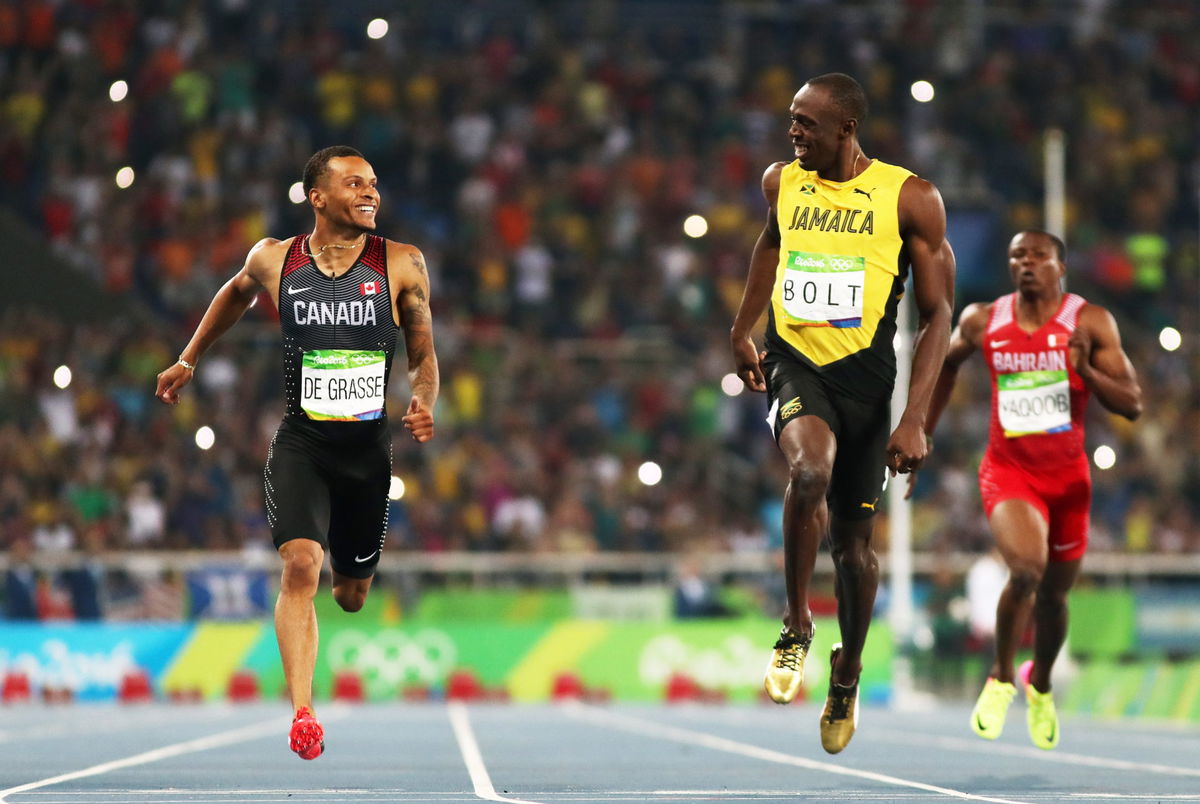
Getty
RIO DE JANEIRO, BRAZIL – AUGUST 17: Andre de Grasse of Canada (L) and Usain Bolt of Jamaica (C) react as they compete in the Men’s 200m Semifinals on Day 12 of the Rio 2016 Olympic Games at the Olympic Stadium on August 17, 2016 in Rio de Janeiro, Brazil. (Photo by Shaun Botterill/Getty Images)

Getty
RIO DE JANEIRO, BRAZIL – AUGUST 17: Andre de Grasse of Canada (L) and Usain Bolt of Jamaica (C) react as they compete in the Men’s 200m Semifinals on Day 12 of the Rio 2016 Olympic Games at the Olympic Stadium on August 17, 2016 in Rio de Janeiro, Brazil. (Photo by Shaun Botterill/Getty Images)
Running events have been taking place for centuries and were initially turned into a major competition by the Ancient Greeks, who founded the Olympics over two millennia ago. The modern-day contest holds such events but in different distances, judging athletes not only by speed but also by agility, stamina, and how they pace themselves.
Watch What’s Trending Now!
The 100m sprint is by far one of the most popular and anticipated events in the Olympics. As the name suggests, this sprint is held over just 100m which just the home run of the entire track. Unlike middle and long-distance races, this one is based on cold speed.
ADVERTISEMENT
Races start over an elaborate procedure in the Olympics
At the start of the 100m sprint, athletes are expected to find their places on the tracks. One lane is assigned to each athlete and they will have to run on that lane throughout the race. Crossing over to another lane can obstruct the movement of another athlete and hence, will result in disqualification.

Getty
EUGENE, OREGON – JUNE 27: Erriyon Knighton and Noah Lyles react after competing in the Men’s 200 Meter Final during day ten of the 2020 U.S. Olympic Track & Field Team Trials at Hayward Field on June 27, 2021 in Eugene, Oregon. (Photo by Cliff Hawkins/Getty Images)
Runners are called to their beginning positions through the words “On you marks”. Athletes then move to the start of their positions on the tracks and adjust their postures. Typically, contestants arch themselves forward with one knee bent and with the hind leg on a starting block to help give them the extra push when the race starts.
ADVERTISEMENT
Athletes are then told to “get set”, after which they move into a more suitable stance, ready to burst through. When the gunshot is sounded, they are allowed to run and will try to get to the finish line as fast as possible.
Top Stories
Falcons Owner Arthur Blank Makes Double Firing Decision as Locker Room Stands Against Raheem Morris’ Exit
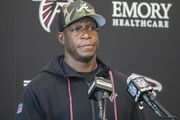
Cowboys Star Faces NFL Discipline For Jaxson Dart Incident Against Giants

49ers’ Deommodore Lenoir Goes on Expletive-Laced Rant Against Troy Aikman After Criticism From Cowboys Legend

Kirk Cousins Announces Return Stance With Falcons After Atlanta’s Four-Game Win Streak

Nine NFL Coaches Who Could Receive Black Friday Pink Slips: Predictions on Pete Carroll, Todd Bowles, Matt LaFleur & More
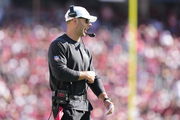
LSU’s Second Straight Loss Forces Kim Mulkey To Admit a Hard Truth

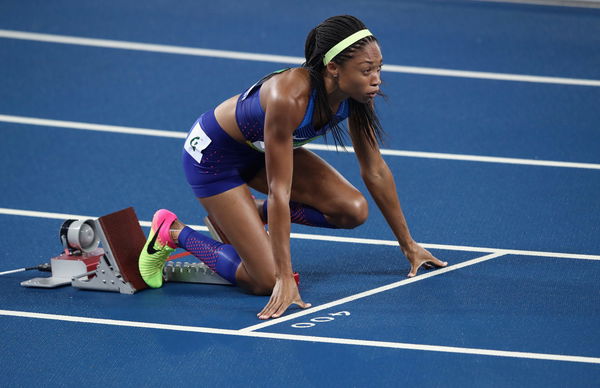
Getty
RIO DE JANEIRO, BRAZIL – AUGUST 15: Allyson Felix of the United States competes in the Women’s 400m final on Day 10 of the Rio 2016 Olympic Games at the Olympic Stadium on August 15, 2016 in Rio de Janeiro, Brazil. (Photo by Cameron Spencer/Getty Images)
ADVERTISEMENT
False starts can end the race before it has even begun
However, if an athlete starts before the shot is fired, it will be considered a false start. When a false start is committed, the athlete is warned. Whoever makes the second one is immediately disqualified from the race. Originally, there was no second chance and even a twitch could cost an athlete the race.
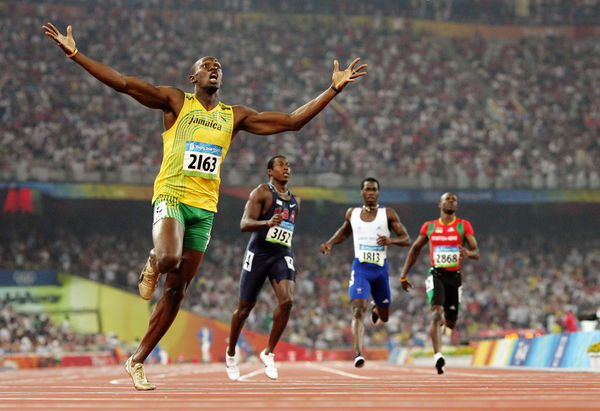
Getty
BEIJING – AUGUST 20: Usain Bolt of Jamaica reacts after breaking the world record with a time of 19.30 to win the gold medal in the Men’s 200m Final ahead of Churandy Martina of Netherlands Antilles Brian Dzingai of Zimbabwe and Shawn Crawford of the United States at the National Stadium during Day 12 of the Beijing 2008 Olympic Games on August 20, 2008 in Beijing, China. (Photo by Michael Steele/Getty Images)
At the finish line, the Olympics committee deemed that whoever’s torso crosses the finish line first is declared the winner. In case of extremely close decisions, photo finishes are employed to determine who crossed the line first.
ADVERTISEMENT
Read more: The Interesting Origin of Athletic Events to Be Held at the Tokyo Olympics 2021
As is the case with every sport at the Olympics, the use of performance-enhancing drugs is not permitted. Anti-Doping tests are carried out after the races and if athletes are found guilty, they will immediately be disqualified. If they have secured either the first second or third positions, they will be disqualified and the next in line for the position will be promoted.
ADVERTISEMENT

Getty
EUGENE, OREGON – JUNE 27: Noah Lyles reacts after winning the Men’s 200 Meter Final during day ten of the 2020 U.S. Olympic Track & Field Team Trials at Hayward Field on June 27, 2021 in Eugene, Oregon. (Photo by Andy Lyons/Getty Images)
Wind can play a crucial role in the outcome of the race. When the wind is blowing against the direction of the race, it can be hard for athletes to perform. If it blowing in their direction, it can be used to their advantage. For this reason, only a maximum wind-aided velocity of 2.0 m/s is allowed.
ADVERTISEMENT
ADVERTISEMENT
ADVERTISEMENT

